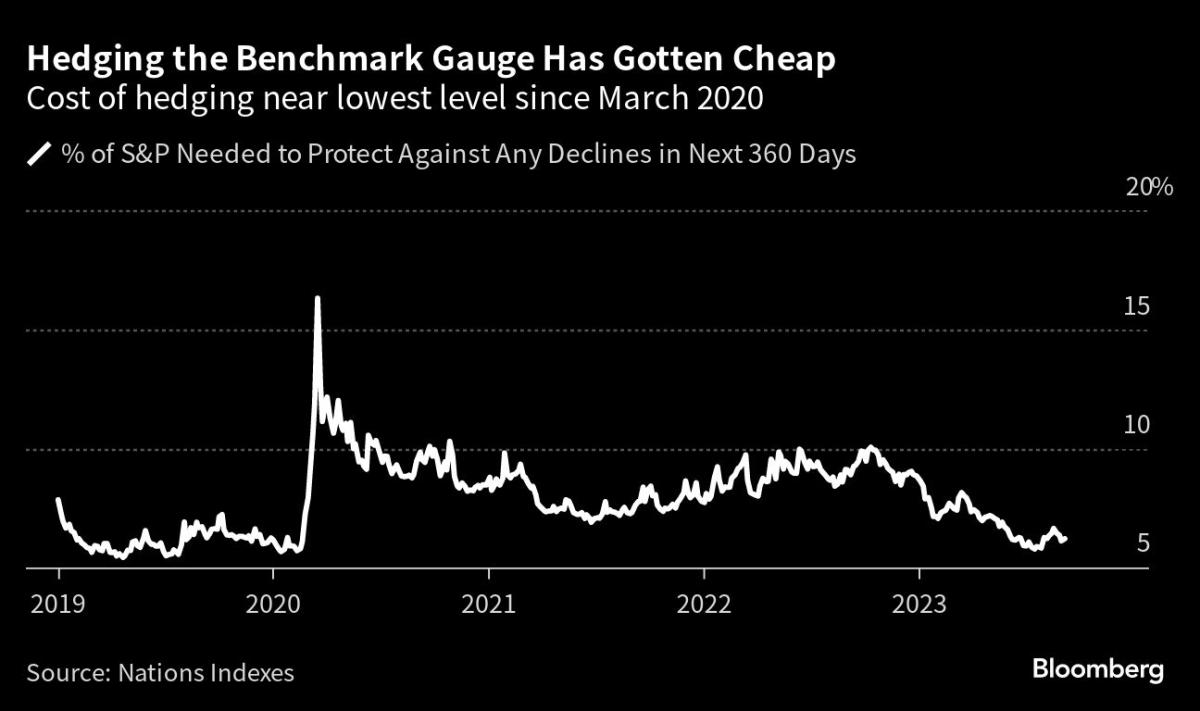A team of equity-derivative strategists at Bank of America argues that the influence of rising zero-day option volumes has been exaggerated and that other factors, such as rising Treasury yields and trading by systematic quant funds, were likely the drivers of a sharp move lower in the S&P 500.
Investors are turning to high-yield cash alternatives, such as savings accounts and bonds, which offer returns of over 5% and are outperforming the S&P 500, prompting some to reconsider their exposure to the stock market's volatility.
Systematic option traders and funds have significant control over the US stock market, reducing the impact of fundamental news, such as Nvidia's earnings report, and contributing to increased market volatility.
Renewed concern over the Federal Reserve's interest rate policy and the potential for another hike this year has led to lower S&P 500 futures and Nasdaq 100 futures, while Dow Jones Industrial Average futures are slightly up.
Economist Gary Shilling predicts that the S&P 500 will decline by around 40% during this market cycle, citing recession indicators such as the yield curve and The Conference Board's Leading Economic Index. He believes that a US recession may already be underway due to the Federal Reserve's focus on reducing inflation, and high valuations in the stock market increase the likelihood of a significant drop.
Stocks edge higher amid concerns over rising bond yields and the Federal Reserve's plans to maintain high interest rates, while the S&P 500 records its biggest weekly decline since March and the Dow Jones Industrial Average and Nasdaq reach their lowest levels in months.
Unusual trading activity in the S&P 500 outside regular market hours is influencing the fate of trillions of dollars' worth of stock options tied to the benchmark US gauge, leading to significant profits for bullish investors and raising concerns about manipulation or hedging strategies.
The Federal Reserve's decision to maintain high interest rates has caused concern in the financial markets, with the S&P 500 and Bitcoin potentially underperforming; however, there appears to be a decoupling between the S&P 500 and Bitcoin, which could be attributed to factors such as regulatory concerns and the anticipation of a spot Bitcoin ETF introduction. This decoupling may favor Bitcoin.
Investors are concerned about a potential showdown for the S&P 500 as stock market commentator, Heisenberg, shares a chart indicating bearish patterns and a major trend line off the October lows, suggesting a sharp drop in the index. Rising bond yields, climbing oil prices, and fears of slowing consumer spending are also factors contributing to investor unease.
The S&P 500 has been hit hard by the September Effect, but investors should remain optimistic as history suggests the market will rebound, and there are compelling buying opportunities in certain growth stocks like Block and SolarEdge with upside potential of 93% and 127% respectively.
Investors are showing signs of stress as big down days become more frequent and rebounds are scarce, with options traders warning against getting too comfortable amidst the risks of a narrowly-averted US government shutdown, rising Treasury yields, concerns about Federal Reserve action on inflation, and an auto-worker strike.
Bond traders are buying bearish hedges for new risk in rates options, indicating a possibility of the benchmark 10-year Treasury note yield reaching 5% by November.
